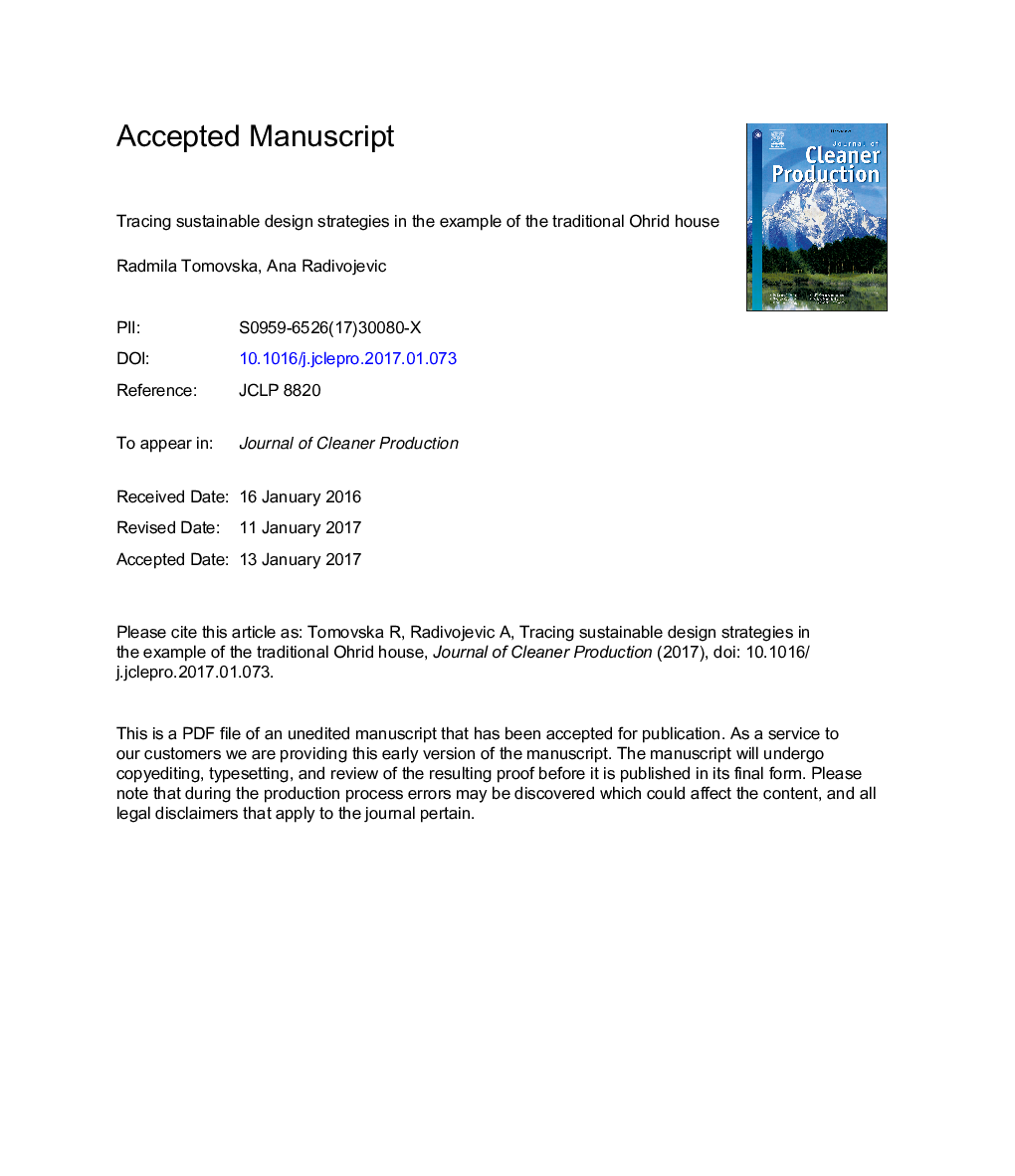| کد مقاله | کد نشریه | سال انتشار | مقاله انگلیسی | نسخه تمام متن |
|---|---|---|---|---|
| 5481453 | 1522106 | 2017 | 47 صفحه PDF | دانلود رایگان |
عنوان انگلیسی مقاله ISI
Tracing sustainable design strategies in the example of the traditional Ohrid house
ترجمه فارسی عنوان
ردیابی استراتژی های طراحی پایدار در مثال خانه سنتی اوهریست
دانلود مقاله + سفارش ترجمه
دانلود مقاله ISI انگلیسی
رایگان برای ایرانیان
کلمات کلیدی
ترجمه چکیده
در این مقاله استراتژی های طراحی پایدار معماری بشکل بشکه ای در نمونه ای از خانه سنتی اوهریش مورد بررسی قرار می گیرد. رویکرد در مورد مشکل حفاظت از منابع موجود در نمونه های انتخاب شده از معماری بومی، امکان تجزیه و تحلیل و بحث در مورد استراتژی های ساخت و ساز گذشته را فراهم می کند که هنوز هم از لحاظ پایداری و طراحی محیط زیست مورد توجه هستند. موضوع این تحقیق استراتژی های طراحی پایدار است که به استفاده مجدد از مصالح ساختمانی و اقدامات مربوط به کاهش ضایعات در قالب ترکیب آن با مواد ساختمانی جدید اشاره دارد. این تحقیق به راه حل های پایدار در مورد کمینه سازی زباله های ساختمانی در محل خانه سنتی اهرید در طی سه مرحله بعد از چرخه عمر مواد و ساختمان اشاره می کند: پیش سازه، ساختمان و مرحله پس از ساخت . اقدامات کمینه سازی اتهامات در محل کار و اصل استفاده از مواد با انرژی ضعیف، که در نمونه خانه سنتی اوهریش مشخص شده است، می تواند به عنوان مبنای مفهومی برای یافتن راه حل های کارآمد در شیوه های محافظت از مواد و انرژی امروز، اثبات این که معماری پایدار می تواند با استفاده ساده و متفکر مواد محلی و تکنیک های ساخت و ساز به دست آید.
موضوعات مرتبط
مهندسی و علوم پایه
مهندسی انرژی
انرژی های تجدید پذیر، توسعه پایدار و محیط زیست
چکیده انگلیسی
This paper examines the sustainable design strategies of the Balkan vernacular architecture in the example of the traditional Ohrid house. The approach regarding the problem of resource conservation which is present in the selected examples of vernacular architecture offers the possibility of analysing and discussing the building strategies of the past, which are still considered to be relevant in terms of sustainability and environmental design. The subject of this research is the sustainable design strategies that refer to the reuse of building material and the measures regarding waste reduction in the form of its incorporation into new building materials. The research points to sustainable solutions regarding on-site minimisation of construction waste in the example of the traditional Ohrid house during the following three phases of the life cycle of both the material and the building: pre-building, building, and post-building phase. The applied on-site waste minimisation measures and the principle of using materials with low-embodied energy, identified in the example of the traditional Ohrid house, can be understood as the conceptual basis for finding more efficient solutions in today's material and energy conservation practices, proving that sustainable architecture could be achieved by a simple and thoughtful application of local materials and building techniques.
ناشر
Database: Elsevier - ScienceDirect (ساینس دایرکت)
Journal: Journal of Cleaner Production - Volume 147, 20 March 2017, Pages 10-24
Journal: Journal of Cleaner Production - Volume 147, 20 March 2017, Pages 10-24
نویسندگان
Radmila Tomovska, Ana RadivojeviÄ,
